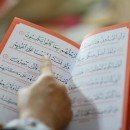
Icelandic is a fascinating language with a rich history and unique characteristics that make it stand out from other languages. It is the official language of Iceland, a small island nation in the North Atlantic with a population of around 360,000 people. In this blog post, we will explore the Icelandic language, its history, grammar, vocabulary, and its role in Icelandic culture.
History of Icelandic Language
Icelandic is a North Germanic language that evolved from Old Norse, the language spoken by the Vikings in Scandinavia from the 9th to the 13th century. Iceland was settled by Vikings in the 9th century, and they brought Old Norse with them to the island. The language evolved over time to become the modern Icelandic we know today.
One of the interesting things about Icelandic is that it has changed very little over the centuries. While other languages have evolved and borrowed words from other languages, Icelandic has remained relatively pure. This is due to Iceland's isolation and the fact that the country was not colonized by other nations.
Icelandic Grammar
Icelandic has a complex grammar system that can be challenging for non-native speakers to master. One of the most distinctive features of Icelandic grammar is its system of four cases: nominative, accusative, dative, and genitive. These cases are used to show the function of a noun in a sentence, such as the subject, object, or possessive.
For example, the word "house" in Icelandic is "hús." In the nominative case, it would be "hús," but in the accusative case, it would be "hús" if it is the direct object of the sentence. In the dative case, it would be "húsi" if it is the indirect object, and in the genitive case, it would be "húss" if it is the possessive.
Another unique feature of Icelandic grammar is its use of two genders: masculine and feminine. Unlike many other languages, there is no neuter gender in Icelandic. Adjectives and pronouns must agree with the gender of the noun they are modifying, and the gender of a noun is not always predictable.
Icelandic is a North Germanic language spoken primarily in Iceland, and it is one of the most complex and highly inflected languages in the world. It has been spoken in Iceland for over 1,000 years, and its grammar has evolved over time, influenced by Old Norse, Old English, and other Scandinavian languages. In this blog post, we will delve into the intricacies of Icelandic grammar, including its noun cases, verb conjugations, and sentence structure.
Nouns
Icelandic nouns are divided into three genders: masculine, feminine, and neuter. The gender of a noun is not always predictable, and must be learned by memorizing the gender of each individual noun. Icelandic nouns also have four cases: nominative, accusative, dative, and genitive. Each case has a different function and ending, which is added to the stem of the noun.
The nominative case is used for the subject of a sentence, while the accusative case is used for the direct object of a sentence. The dative case is used for the indirect object of a sentence, and the genitive case is used to show possession or a relationship between two nouns. For example, the word for "cat" in Icelandic is "köttur". Here are the noun endings for each case:
- Nominative: köttur
- Accusative: kött
- Dative: ketti
- Genitive: kattar
Verbs
Icelandic verbs are conjugated based on tense, mood, person, and number. There are three tenses: present, past, and future. The mood of a verb can be indicative, imperative, or subjunctive. The person and number of the subject of the verb are indicated by the verb ending.
In Icelandic, verbs are also divided into strong and weak verbs. Strong verbs are irregular and have their own unique conjugation patterns, while weak verbs follow a more predictable pattern. Here is an example of a strong verb conjugation:
- Ég fór (I went)
- Þú fórst (you went)
- Hann fór (he went)
- Við fórum (we went)
- Þið fóruð (you went)
- þeir fóru (they went)
Notice that the verb "far" (go) is a strong verb and has its own unique conjugation in the past tense.
Sentence Structure
Icelandic has a flexible word order, which means that the word order can be changed to emphasize different parts of the sentence. The basic word order is subject-verb-object (SVO), but the verb can also come first in a sentence for emphasis. Adjectives, possessive pronouns, and numerals generally come before the noun they modify, while demonstrative pronouns and personal pronouns generally come after the noun.
In Icelandic, the verb must agree in number and person with the subject of the sentence. This means that if the subject is singular, the verb must also be singular, and if the subject is plural, the verb must also be plural. For example:
- Ég hef mikið að gera. (I have a lot to do.)
- Við höfum mikið að gera. (We have a lot to do.)
Vocabulary in Icelandic Language
Icelandic vocabulary is derived mainly from Old Norse, with many words and phrases still in use today. In addition, new words are created by combining existing words or by borrowing words from other languages. However, Icelandic has strict rules for borrowing words, and any new word must be approved by the Icelandic Language Committee.
One of the most fascinating things about Icelandic vocabulary is its many words for snow and ice. This is because Iceland is a cold country with a lot of snow and ice, and the language has evolved to reflect this. For example, there are more than 100 different words for snow in Icelandic, including "snjór" (snow), "frost" (powdery snow), and "hundslappadrífa" (slushy snow).
Icelandic Culture and Language
Icelandic language is an important part of Icelandic culture and national identity. It is the main language spoken in Iceland, and it is used in all aspects of daily life, from government and business to education and media. Icelandic is also a compulsory subject in Icelandic schools, and students must learn the language to graduate.
Icelandic literature is also an important part of Icelandic culture, and many of the country's most famous writers have written in Icelandic. The sagas, which are medieval Icelandic stories, are considered some of the most important works in Icelandic literature. They tell stories of Viking culture and the settlement of Iceland, and they have had a significant influence on Icelandic culture.
Iceland is a country with a rich cultural and linguistic heritage. Its unique geographical location, isolated from the rest of Europe, has allowed Icelandic culture and language to evolve independently for centuries, resulting in a distinct identity that is admired around the world. In this blog post, we will explore the fascinating history and characteristics of Icelandic culture and language.
History of Icelandic Culture
The history of Icelandic culture can be traced back to the settlement of Iceland in the 9th century. The Vikings who arrived on the island brought with them their own culture, customs, and traditions. Over the centuries, Iceland developed its own unique culture, influenced by the harsh natural environment and the isolation of the island.
One of the most distinctive features of Icelandic culture is its strong literary tradition. Icelandic sagas, written in Old Norse, are a collection of stories that recount the lives of the early settlers of Iceland. These sagas are not only a valuable source of historical information but also a testament to the literary talents of the Icelandic people.
Icelandic literature has continued to thrive in modern times, with many internationally renowned authors, such as Halldór Laxness and Arnaldur Indriðason, hailing from Iceland. In addition to literature, Iceland is also known for its vibrant music scene, with many Icelandic musicians, such as Björk and Sigur Rós, gaining worldwide acclaim.
Icelandic Language
The Icelandic language is a North Germanic language, closely related to other Scandinavian languages such as Danish, Norwegian, and Swedish. However, unlike these languages, Icelandic has changed relatively little over the centuries, meaning that modern Icelanders can still read the Old Norse sagas with ease.
One of the most distinctive features of Icelandic is its complex grammar. Icelandic nouns have three genders (masculine, feminine, and neuter) and four cases (nominative, genitive, dative, and accusative), making it a highly inflected language. This means that a single noun can have up to 48 different forms, depending on its gender, case, and number.
Icelandic pronunciation can also be challenging for non-native speakers, with its combination of consonants, glottal stops, and unique vowel sounds. However, despite its complexities, Icelandic is a beautiful language, renowned for its poetic and lyrical qualities.
Preservation of the Icelandic Language
The Icelandic language has been under threat in recent years due to the increasing dominance of English in Iceland, particularly in business and technology. There is concern that the younger generation may not be as fluent in Icelandic as their parents and grandparents, which could lead to a decline in the use and prestige of the language.
To address this issue, there have been several initiatives to promote and preserve the Icelandic language. For example, the Icelandic government has implemented policies to ensure that Icelandic remains the primary language used in schools and government institutions. In addition, there are language immersion programs for foreign students to learn Icelandic and gain an appreciation of Icelandic culture.
Icelandic Culture Today
Today, Icelandic culture continues to thrive, with a strong emphasis on creativity, individuality, and innovation. Icelanders pride themselves on their unique cultural identity and are known for their love of nature, art, and music.
One of the most popular cultural events in Iceland is the Reykjavik Arts Festival, which showcases the best of Icelandic and international contemporary art. Another popular event is the Iceland Airwaves music festival, which attracts thousands of visitors each year and features a diverse range of Icelandic and international musicians.
Icelandic cuisine is also gaining international recognition, with a focus on fresh, local ingredients and traditional cooking methods. Some of the most popular Icelandic dishes include smoked lamb, fermented shark, and skyr (a type of yogurt).
Recent Posts

Understanding Translation Serv...

Agenzia di Traduzione a Roma: ...

Die Essentielle Rolle von Übe...

Die Essentielle Rolle von Übe...

Die Essentielle Rolle von Übe...

La Traduction Assermentée: Un...
Share it.
© Copyright 2022 LLC


